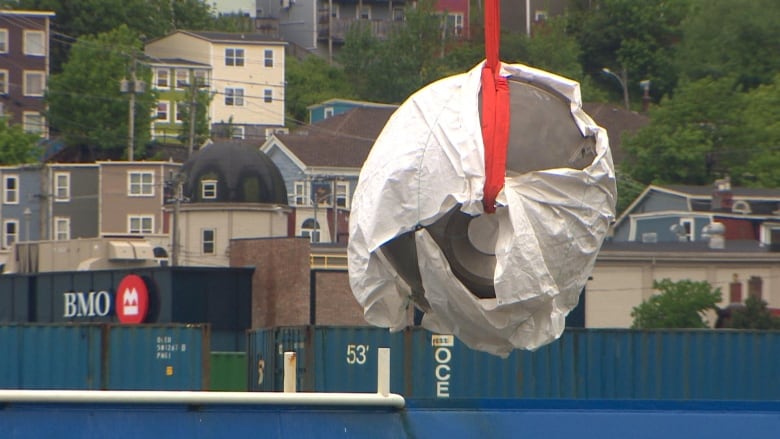Massive investigation still in fact-finding phase, says U.S. Coast Guard

Investigators in the United States are trying to figure out whose remains they have in their possession, as part of the massive investigation into the implosion of OceanGate Expedition's Titan submersible.
Searchers in the North Atlantic Ocean were able to recover large pieces of the submersible, which was believed to have imploded less than two hours into its dive to the Titanic on June 18. They also found what they believe to be human remains.
"United States medical professionals are conducting a formal DNA analysis of presumed human remains that have been carefully recovered from within the wreckage at the site of the incident," reads a brief statement from the U.S. Coast Guard on Monday.

The remains could belong to one or more of five people — Stockton Rush, Hamish Harding, Suleman Dawood, Shahzada Dawood and Paul-Henri Nargeolet. All five would have been killed instantly when the submersible succumbed to the massive pressure of the ocean at such great depths.
The Titanic sits in about 3,800 metres of water. Questions have since been raised about the integrity of Titan's hull, which was built out of carbon fibre instead of the industry-standard titanium. OceanGate's experimental approach to deepsea exploration came under fire by industry experts before the implosion and has been scrutinized by the world amidst the public frenzy that followed its disappearance.
No timeline given for public hearings
The incident is now being investigated by several agencies in the United States and Canada, with help from experts in the United Kingdom and France. The United States Coast Guard is leading the charge, after calling for a Marine Board of Investigation — the highest level of inquiry available to them.
A spokesperson for the U.S. Coast Guard told CBC News on Monday that they are still in the fact-finding stage of the investigation. All evidence recovered from the sea floor has been handed over to the U.S. Coast Guard, including the titanium end caps of the submersible and other pieces brought to St. John's on June 28.
After the fact-finding stage is complete, the Marine Board of Investigation will commence public hearings. The board will have the power to issue subpoenas and production orders for evidence, and summon witnesses to testify in front of the public.
No dates have been set for those hearings. The coast guard reserves Marine Boards of Investigation to the most serious nautical disasters. More recent examples include the Deepwater Horizon disaster in the Gulf of Mexico in 2010 and the loss of 33 souls on board the cargo ship El Faro off the coast of Florida in 2015.

Add some “good” to your morning and evening.
A variety of newsletters you'll love, delivered straight to you.
*****
Credit belongs to : www.cbc.ca
 MaharlikaNews | Canada Leading Online Filipino Newspaper Portal The No. 1 most engaged information website for Filipino – Canadian in Canada. MaharlikaNews.com received almost a quarter a million visitors in 2020.
MaharlikaNews | Canada Leading Online Filipino Newspaper Portal The No. 1 most engaged information website for Filipino – Canadian in Canada. MaharlikaNews.com received almost a quarter a million visitors in 2020.







